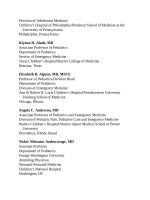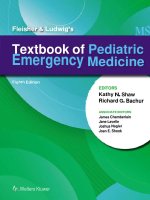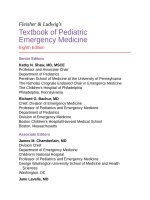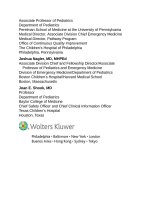Pediatric emergency medicine trisk 0325 0325
Bạn đang xem bản rút gọn của tài liệu. Xem và tải ngay bản đầy đủ của tài liệu tại đây (102.86 KB, 1 trang )
FIGURE 11.7 Transport communication center. A dedicated transport communication center
and skilled personnel are invaluable in coordinating all aspects of pediatric transport. The
system should include dedicated phone lines, radio access, personnel notification capability
systems, and personnel. (Used with permission, Rupinder Sandhu, © Seattle Children’s
Hospital, Seattle, WA.)
Communication with the transport team begins with an initial call/request from
the referring provider. This initial contact is best managed by the use of a protocol
or template, which helps ensure that the necessary patient and logistical
information is properly received by the transport team. During the initial call or
soon thereafter, the referring provider may request advice regarding the medical
management of the patient, which may be offered by the receiving physician. For
critically ill infants and children, medical advice via telephone may be needed
intermittently from the time of initial contact through transport team arrival, to
the patient evaluation at the referring facility, through the arrival at definitive
location in the receiving facility. For these reasons, it is preferable to have
transport requests initiated and received by experienced physicians who can ask
for and offer appropriate advice directly. The more people between the source of
the information and the final recipient, the greater the potential for significant
changes or omissions that may be vital to the patient. Nurse report should also
occur between the transport nurse and the referral’s bedside nurse; these
conversations are important sources of crucial information about clinical status,
medications, access, etc. These two avenues of information flow together can
maximize awareness of all aspects of the patient’s disease process and current
medical condition, and enable the transport team to be optimally prepared for care
of their patient.









